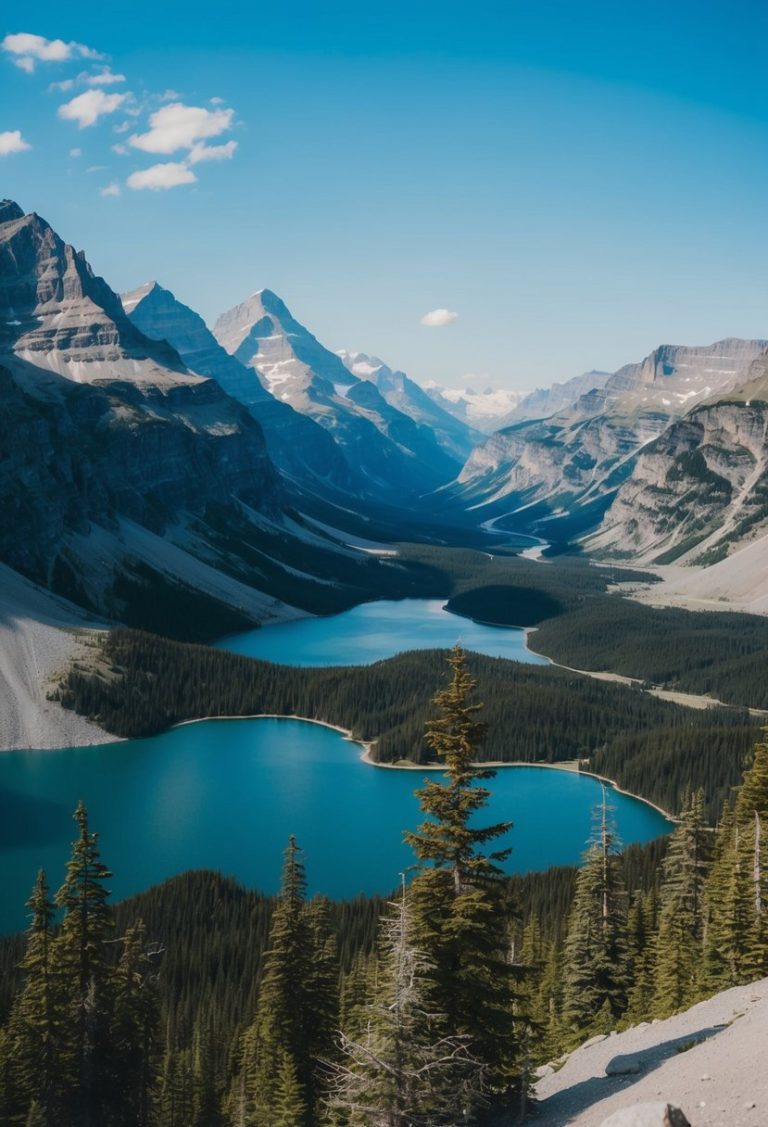Lassen Volcanic National Park is a unique natural wonder known for its stunning landscapes and geothermal features. This park offers visitors a chance to explore diverse terrains, from volcanic peaks to serene alpine lakes. The five best hikes in Lassen Volcanic National Park showcase the beauty and variety of this remarkable area, catering to both seasoned adventurers and casual walkers.

These hikes provide a range of experiences, allowing hikers to witness the park’s fascinating geology and vibrant ecosystems. From easy trails to more challenging ascents, they promise awe-inspiring views of the volcanic landscape and the chance to connect with nature.
1) Cinder Cone Trail

Cinder Cone Trail is one of the most impressive hikes in Lassen Volcanic National Park. This trail spans about 4.1 miles round trip and offers a mix of challenging terrain and stunning views.
Hikers start on a sandy path that is gentle at first. As they progress, the trail steepens, leading to the summit of Cinder Cone.
At 1.2 miles into the hike, a fork in the trail gives a first glimpse of the colorful Painted Dunes. These unique formations create a vibrant landscape.
The trail also showcases the Fantastic Lava Beds. These lava formations are a testament to the park’s volcanic history.
Visitors should be careful of their footing, as the trail can have loose rocks. Cinder Cone Trail provides an excellent opportunity to experience the natural beauty of this unique environment.
More details can be found on the Lassen Volcanic National Park website.
2) Lassen Peak Trail

The Lassen Peak Trail is one of the most iconic hikes in Lassen Volcanic National Park. This trail is about 5 miles roundtrip and offers a moderate level of difficulty.
Hikers gain around 2,000 feet in elevation, which can be challenging but rewarding. The trail features a wide path, making it accessible for many visitors.
Along the way, hikers experience stunning views of the surrounding landscape, including lush meadows and unique volcanic features. The final ascent offers breathtaking panoramas from the summit.
The trailhead is located at Lassen Peak Trailhead, and it typically takes about 3.5 hours to complete the hike. It is a popular choice for both seasoned hikers and those looking for a memorable outdoor experience.
3) Bumpass Hell Trail
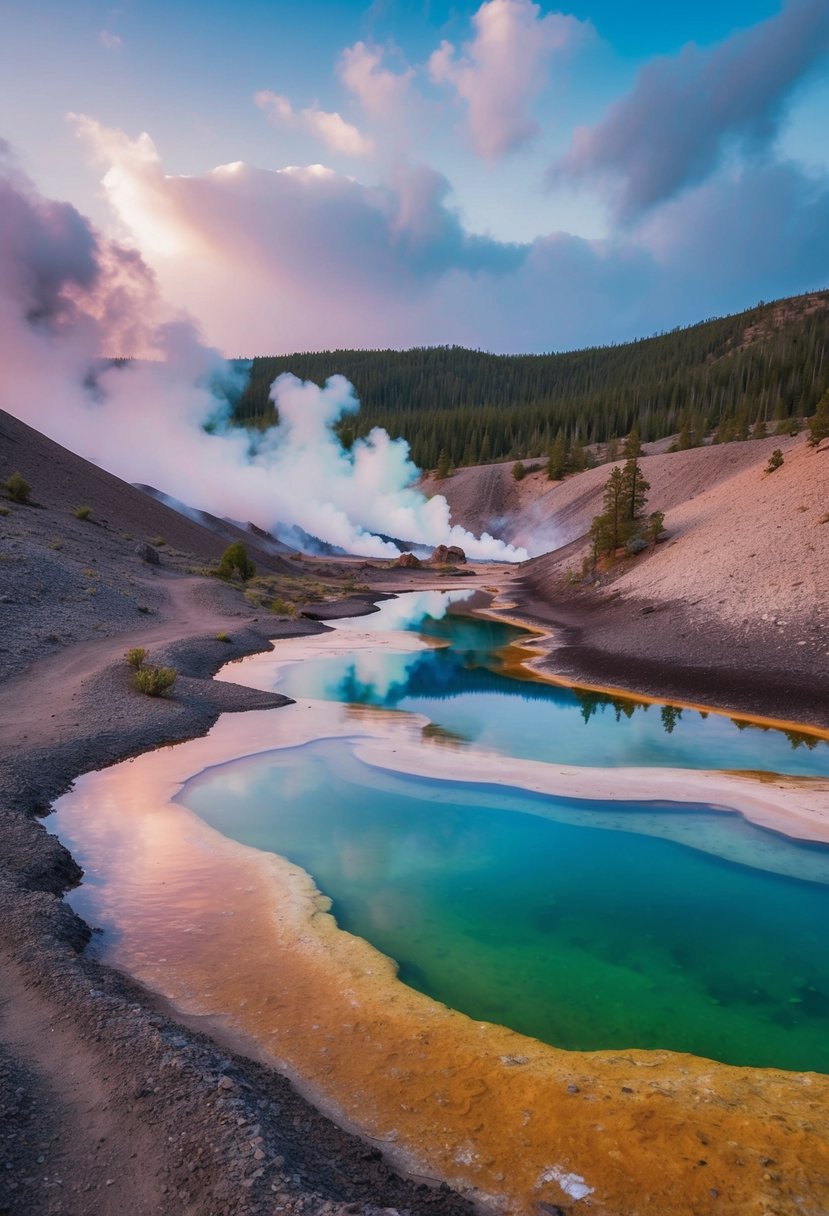
Bumpass Hell Trail is a well-known hike in Lassen Volcanic National Park. This trail is approximately 3 miles round trip and takes visitors through a unique geothermal area.
The hike starts at the Bumpass Hell parking area, located off Lassen Volcanic National Park Highway. Hikers will experience sights like boiling mud pots, steaming fumaroles, and bubbling hot springs.
The scenery along the trail is both striking and evolving. Visitors can enjoy views of colorful mineral deposits and rugged landscapes. The trail is considered moderate in difficulty, making it suitable for many outdoor enthusiasts.
Wildlife may also be spotted along the way, adding to the hiking experience. Proper preparation and a good pair of hiking boots are recommended for this adventure.
Bumpass Hell offers a glimpse into the geothermal activity that shapes the park. It serves as a reminder of the natural forces at work beneath the Earth’s surface.
4) Kings Creek Falls Trail
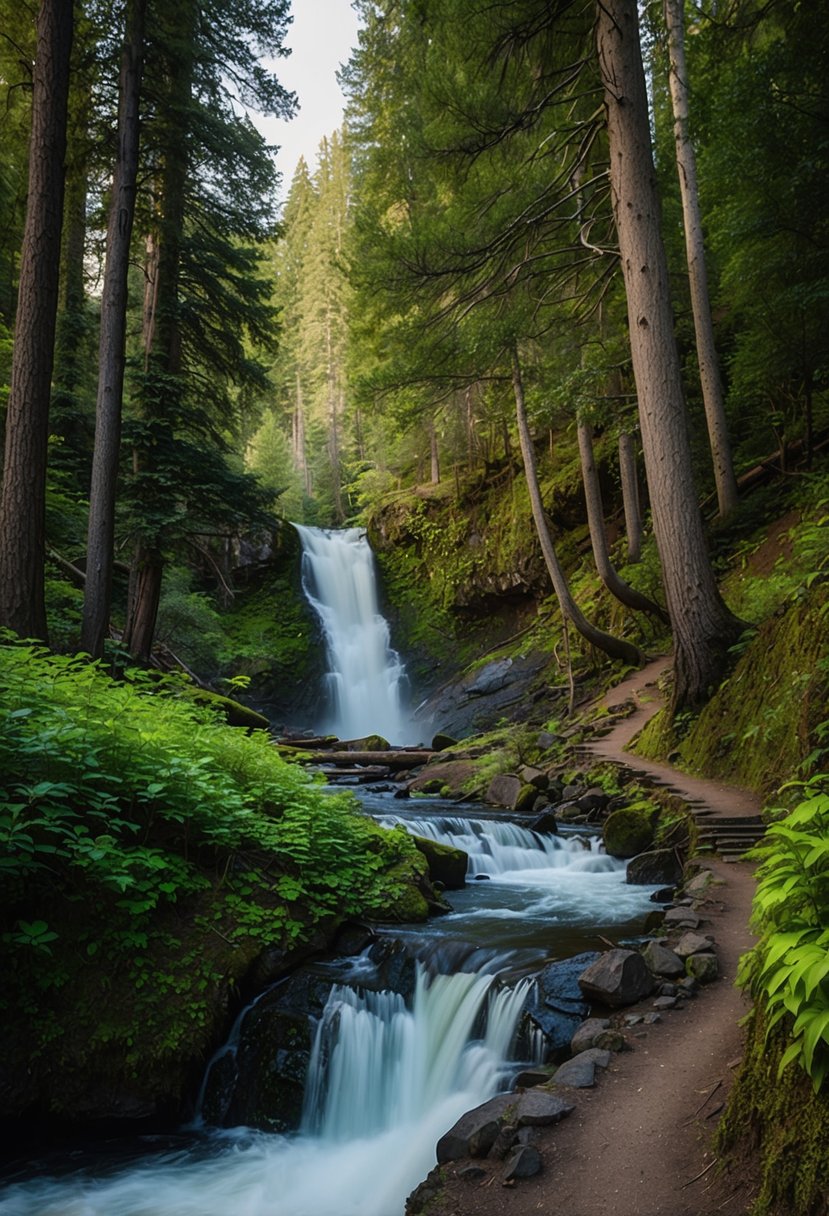
Kings Creek Falls Trail offers a breathtaking hike in Lassen Volcanic National Park. The trail is about 2.8 miles long and features a moderate level of difficulty. Hikers enjoy the beautiful scenery and the sound of flowing water.
The trail descends to Kings Creek Falls, which is a stunning 40-foot waterfall. It follows a creek downhill, making the way to the falls relatively easy. However, hikers should prepare for an uphill trek on the return journey.
Wildlife can often be spotted along the trail. Deer and fox are common sights for those who keep their eyes open. It’s a great opportunity for nature enthusiasts.
Parking at the trailhead is limited, so arriving early is recommended. Many visitors appreciate this hike for its accessibility and rewarding views. For more details about the trail, check out the Kings Creek Falls Trail page.
5) Sulphur Works Trail
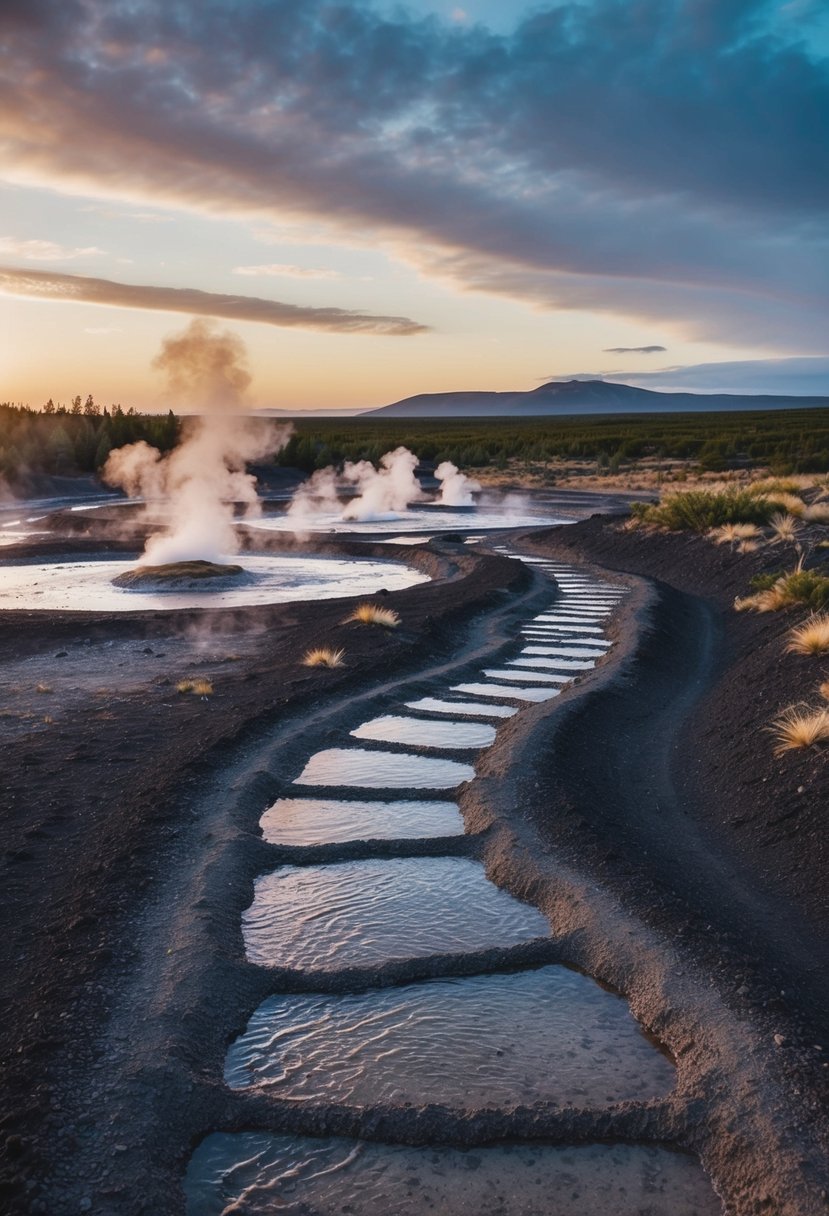
Sulphur Works Trail offers a unique experience in Lassen Volcanic National Park. It is known for its geothermal features, including bubbling mud pots and steam vents.
The trail is approximately 1.5 miles round trip, making it a short and accessible option. Hikers can explore the colorful mineral deposits and enjoy distinctive landscapes.
This trail is especially popular in warmer months, typically from June to October. In winter, it may offer opportunities for snowshoeing, adding to its appeal.
Visitors should be aware that the park charges a fee for entry, which varies based on the type of vehicle. The scenic beauty and geothermal activity make Sulphur Works Trail a must-see site in the park.
Geological Wonders of Lassen Volcanic National Park
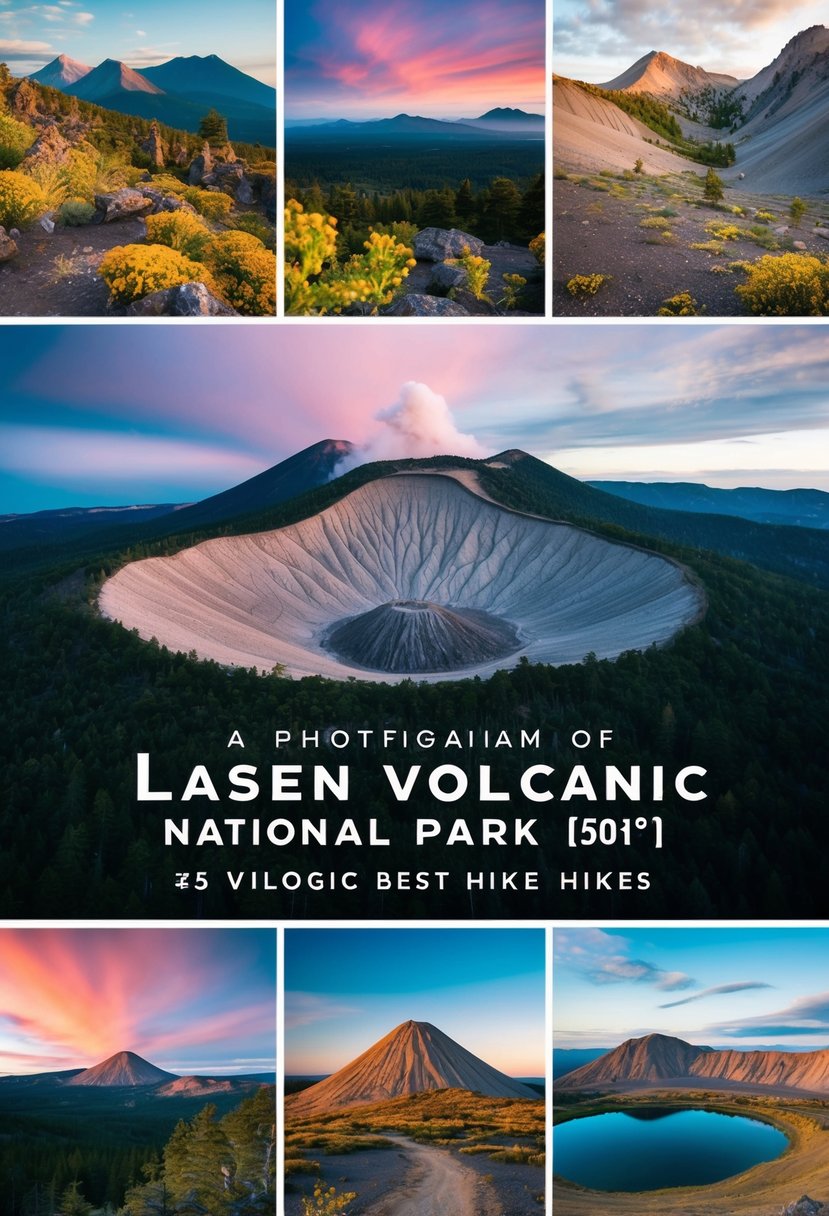
Lassen Volcanic National Park is home to remarkable geological features that showcase the power of volcanoes and the unique ecology borne from them. This section explores the volcanic terrain and geothermal wonders of the park, along with its distinct ecological zones.
Volcanic Terrain and Geothermal Features
This national park features diverse volcanic terrains, including cinder cones, lava domes, and boiling springs. The most notable feature is Lassen Peak, the largest plug dome volcano in the world.
Visitors can also explore hydrothermal areas where steam vents, fumaroles, and mud pots are prevalent. For instance, Bumpass Hell showcases a large concentration of geothermal activity with its bubbling mud pots and hot springs, offering a glimpse into the Earth’s interior.
These features are not only visually stunning but also provide important insights into volcanic activity and geology. The landscape changes dramatically from lush meadows to rugged volcanic rock, demonstrating the impact of volcanic eruptions over time.
Unique Ecological Zones
Lassen Volcanic National Park hosts various ecological zones that result from its volcanic activity. At lower elevations, visitors find mixed conifer forests, which gradually shift to subalpine meadows at higher elevations.
The park is also home to unique plant and animal species. For example, the harsh conditions near geothermal areas create habitats for specialized organisms that thrive in high temperatures. These diverse environments help sustain a variety of wildlife, contributing to the park’s rich biodiversity.
By protecting these ecological zones, Lassen Volcanic National Park helps preserve the delicate balance between geological forces and nature, making it a valuable area for study and exploration.
Preparing for a Hike in Lassen Volcanic
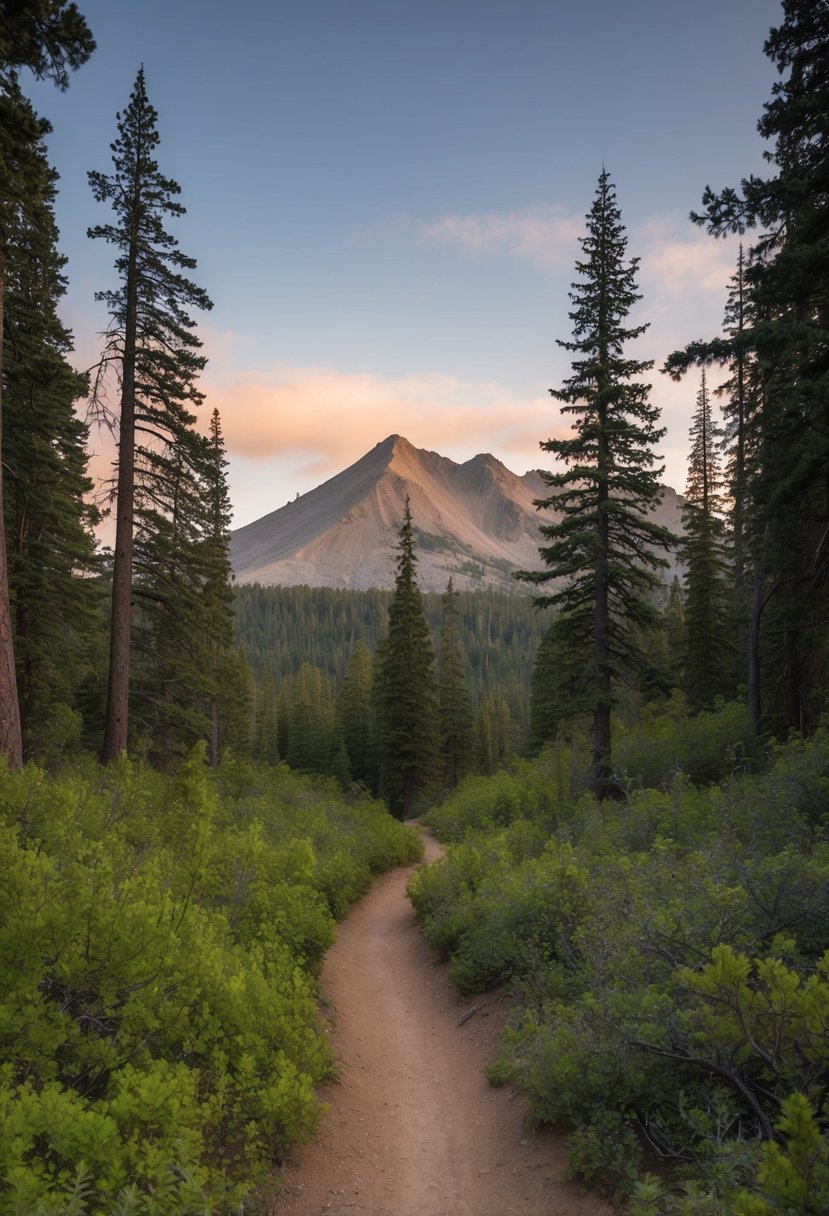
Hiking in Lassen Volcanic National Park requires careful planning to ensure safety and enjoyment. Understanding the risks and best times to visit can enhance the hiking experience.
Safety Tips and Guidelines
Before hitting the trails, hikers should be well-prepared. Here are essential safety tips:
- Check Weather Conditions: Weather can change quickly. Always check forecasts before heading out.
- Stay on Marked Trails: This helps protect the environment and reduces the chances of getting lost.
- Wear Appropriate Gear: Sturdy hiking boots, layered clothing, and a hat for sun protection are important.
- Bring Enough Water and Snacks: Hydration is crucial. Carry at least two liters of water and high-energy snacks.
- Know Emergency Contacts: Familiarize yourself with park ranger contacts and locations of emergency services.
- Wildlife Awareness: Keep a safe distance from wildlife. Never feed animals, as it can lead to dangerous situations.
By following these guidelines, hikers can minimize risks while enjoying the park’s beauty.
Best Times to Visit
Timing is key for a great hiking experience in Lassen Volcanic National Park. Visitors should consider the following factors:
- Summer (June to August): This is the most popular time. Trails are clear of snow, and all facilities are open. Expect warmer temperatures.
- Fall (September to October): Cooler weather and fewer crowds make this an ideal time. The fall foliage provides stunning scenery.
- Spring (April to May): Early spring hiking can involve snow on the trails. Visitors should be more cautious. Locations like Bumpass Hell begin to open up in late May.
- Winter (November to March): Conditions can be hazardous due to snow and ice. Some trails may be inaccessible. Winter sports like snowshoeing can be enjoyable.
By understanding the best times to visit, hikers can plan their trips for optimal conditions.



